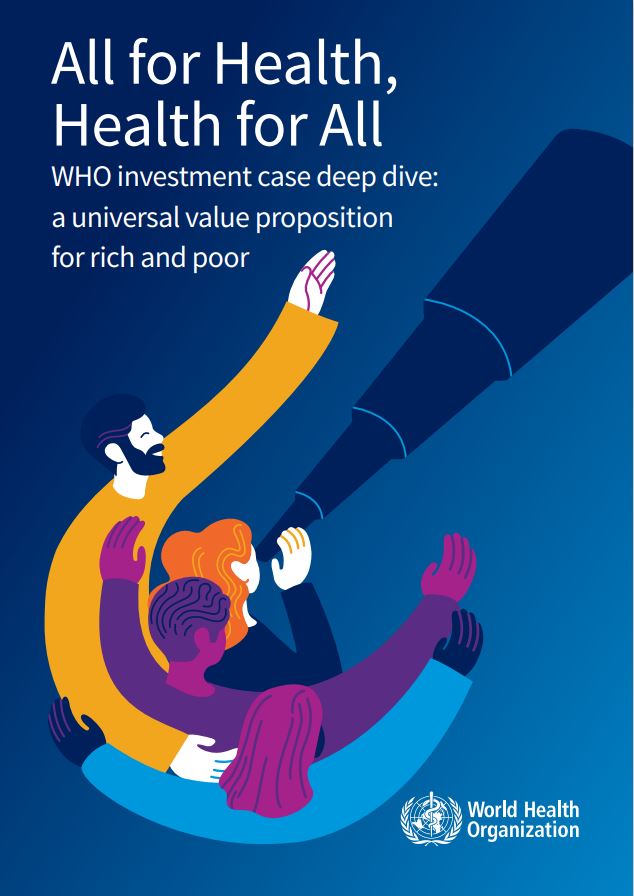
WHO’s 4-year work programme, the Fourteenth General Programme of Work (GPW14) presents for the first time WHO’s Theory of Change, a graphic description of how the work of WHO drives impact.
Investment case 2025–2028
Promote, provide and protect health and well-being for all people, everywhere
With its participatory governance structure including all 194 Member States, shared priorities, and active partnerships with health coalitions and civil society, WHO is central to creating a healthier future for all. WHO’s new strategy for 2025–2028, the Fourteenth General Programme of Work (GPW 14), is a co-creation of all Member States and partners facilitated by the WHO Secretariat that will accelerate progress in health and well-being for everyone, everywhere.
To deliver on its strategy, WHO needs to be predictably and sustainably financed. The total budget need for the 4-year GPW 14 is US$ 11.1 billion, of which Member States will cover US$ 4 billion. This leaves a funding gap of US$ 7.1 billion, which needs to be filled through voluntary contributions.
Investment in WHO is an investment in humanity, an investment that makes the world a healthier, fairer and safer place. It is an investment that moves us all closer to the vision of health for all.
All for Health
WHO embodies the collective commitment of its Member States and partners to health as a global goal.
Health for All
WHO is a catalyst for country progress towards the well-being of all, guided by evidence-based standards, and stepping forward when emergencies threaten lives.
Over the next four years, WHO will save at least 40 million lives through concrete actions including: increasing the number of vaccines delivered to priority countries; providing access to health services to more than 150 million people in humanitarian settings in 30 countries; bringing solar electrification to 10 000 health facilities; supporting 55 countries in educating and employing 3.2 million health workers; helping 84 countries reach targets for eliminating malaria, mother-to-child HIV transmission and other diseases; strengthening access to timely and reliable health data; and prequalifying 400 health products per year.
